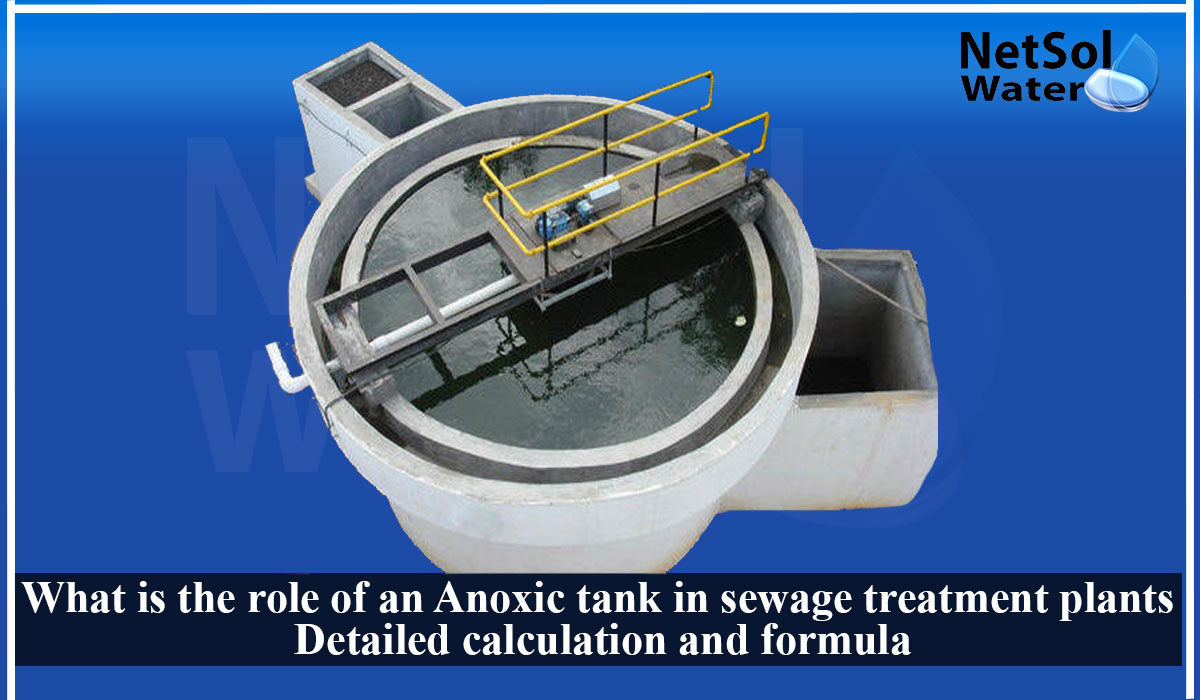Sewage treatment includes various number of treatment methods, each with its own set of procedures, benefits, equipment, and outcomes. It is critical to keep track of the various techniques and apply them appropriately. It enables the plants to get the most out of their treatment systems, comply with regulatory standards, and keep operating costs and time demands under control.
The following explanation will go over anoxic conditions in sewage treatment, the role of an anoxic tank in a sewage treatment plant, and the use of an anoxic tank in a sewage treatment plant (STP).
What does anoxic mean?
Anoxic environments are those environments in which free or molecular oxygen (O2)is not present, though bound oxygen may be present. The term "anoxic" refers to the environment rather than microorganisms and their processes.
Anoxic conditions are different from anaerobic conditions in sewage treatment based on the presence or absence of nitrogen. Anoxic conditions do not have molecular oxygen, but they may have nitrates or nitrites. Nitrates (NO3) and nitrites (NO2) both contain bound oxygen because their structures include oxygen molecules. These compounds may be present in an anoxic environment as long as there is no free oxygen.
Role of Anoxic tanks in sewage treatment plants or STPs
As an essential part of a sewage treatment facility, the anoxic tank is essential in the removal of nitrogen from sewage. If sewage is not properly handled, nitrogen, one of the main pollutants in it, can harm the ecosystem.
What is the use and role of Anoxic tank in the removal of Nitrogen?
An anoxic tank offers the absence of oxygen, which is required for the development of denitrifying bacteria. Via a process known as denitrification, these bacteria convert nitrate (NO3-) to nitrogen gas (N2), removing nitrogen from the effluent. The anoxic tank also aids in lowering the sewage's dissolved oxygen content, which can prevent the development of denitrifying bacteria.

How are anoxic tanks useful in the removal of nitrogen in STPs?
Retention Time and C:N Ratio
The retention period and the carbon to nitrogen (C:N) ratio in the anoxic tank are both controlled. The length of time sewage spends in the tank is known as the retention time, and it is influenced by both the volume of the tank and the flow rate of the sewage.
The anoxic tank should be created to have a retention time of at least two hours, in order to achieve optimal denitrification. This holding period gives the denitrifying bacteria enough time to turn nitrate into nitrogen gas.
The following formula can be used to determine the retention time:
Retention time = Tank volume / Flow rate of influent
The C:N ratio is the proportion of total nitrogen (TN) to carbonaceous biochemical oxygen demand (CBOD) in sewage. The following formula can be used to determine the C:N ratio:
C:N ratio = CBOD / TN
The process of denitrification
For denitrification to occur in an anoxic tank, a 4:1 C:N ratio is optimum. This ratio offers the denitrifying bacteria enough carbon, to use throughout the denitrification process. It's possible that there won't be enough carbon available for denitrification to take place, if the C:N ratio is too low, and it's possible that the denitrifying bacteria won't be able to use all of the available nitrogen, if it's too high.
Nitrate and nitrite concentrations in the effluent can be used to track the denitrification process. The target nitrate concentration for the effluent is less than 10 mg/L.The anoxic tank must be properly constructed and operated, in order to remove nitrogen as efficiently as possible, while safeguarding the environment
Conclusion
Finally, it should be noted that the anoxic tank is an essential part of a sewage treatment facility, which is essential in the removal of nitrogen from sewage.
Denitrifying bacteria can develop and thrive in the tank by managing the retention time and the C:N ratio, which enables efficient nitrogen removal. In order to ensure optimal nitrogen removal and safeguard the environment, the anoxic tank must be designed and operated properly. It is possible to check that the denitrification process is working properly, by monitoring the concentrations of nitrate and nitrite in effluent.
Leading manufacturer of sewage treatment plants in India
Netsol Water is the leading manufacturer, supplier, and exporter of a quality selection of water treatment, and wastewater treatment plants in India, by using advanced sewage treatment methods.
RO plants, water softeners, ETPs, STPs, DM plants, AMC, O&M, Ultra filtration, UV, Ozonation, ZLD plants, Anoxic tanks, and other goods and services are available from us. We also provide services to businesses in sectors including automotive, pharmaceutical, textile, pulp & paper, beverages, refineries, schools, hospitals, office buildings, and hotels, among others.
Call us at +91 9650608473 or email at enquiry@netsolwater.com for further information.



